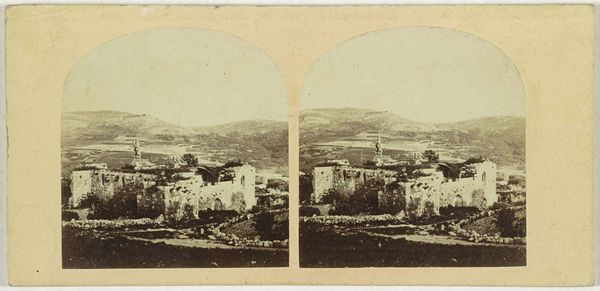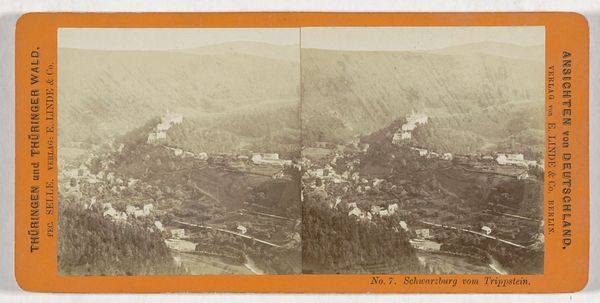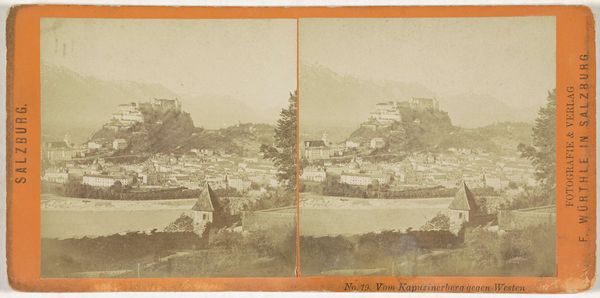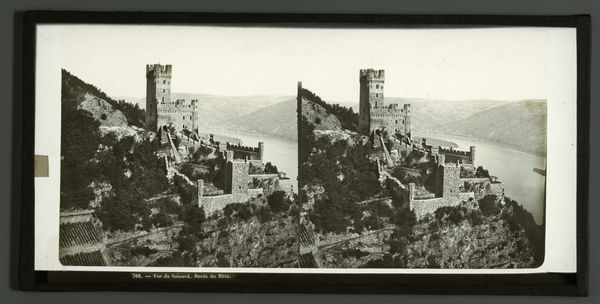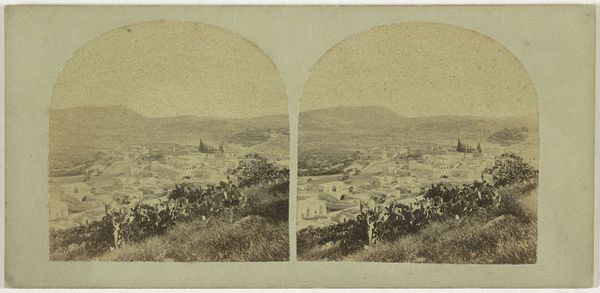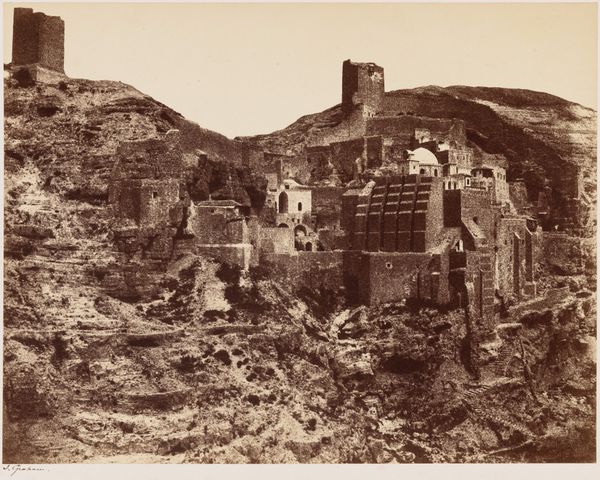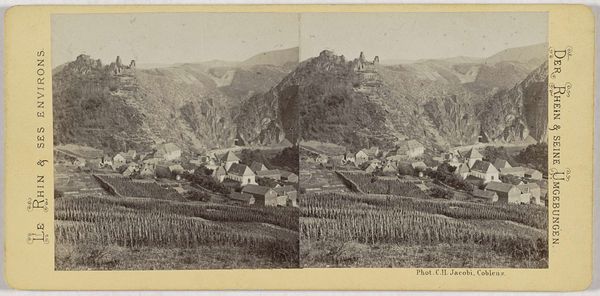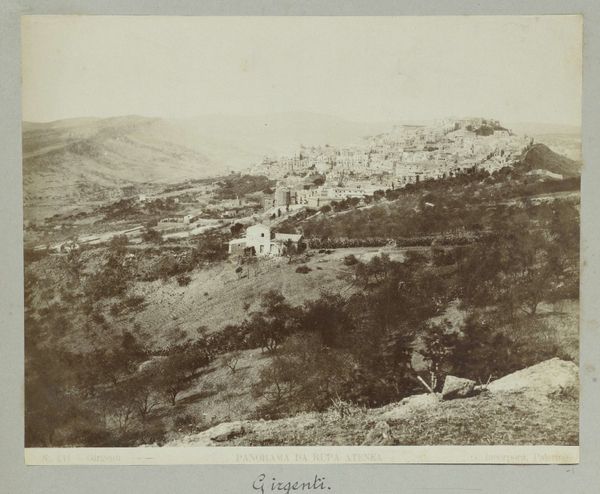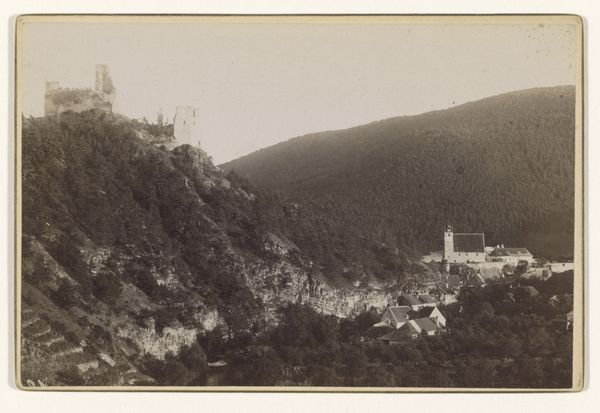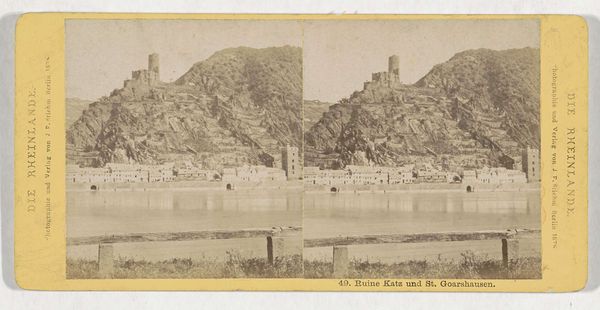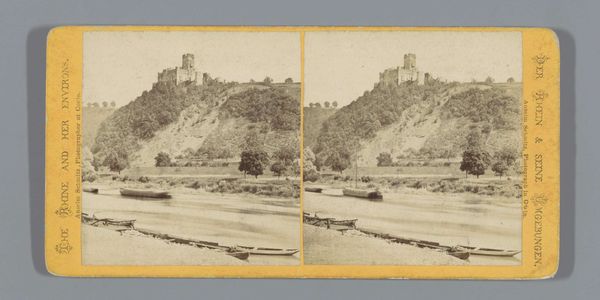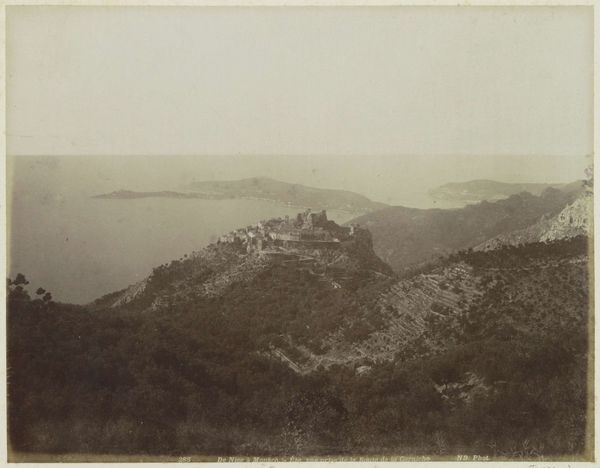
Dimensions: height 86 mm, width 177 mm
Copyright: Rijks Museum: Open Domain
Editor: This is "Rijksburcht Cochem aan de Moezel" from 1882, created by Sophus Williams, and preserved as a print photograph. Looking at it, I am struck by the composition and how the castle seems to dominate the scene. What stands out to you about the aesthetic qualities of this image? Curator: What immediately grabs my attention is the stereoscopic presentation. The diptych form, essentially a double image, allows for a depth of field and spatial articulation that is otherwise unobtainable in a single photographic print. Notice the repetition, not merely as duplication, but as a structural device meant to emulate human binocular vision, offering the viewer a more compelling sense of realism. Editor: That’s fascinating. So the structure itself, being a double image, contributes to the perceived depth and is a key formal element? Curator: Precisely. Consider the composition: the arrangement of the castle, the river, and the landscape elements. The lines draw the eye toward the central point, the castle. However, the slight variation in perspective between the two images introduces a visual tension, enhancing the three-dimensionality. We see, simultaneously, the unity and the division of forms. What we decode as ‘castle’ we now view with a calculated dimensionality. Editor: It almost feels like an early form of virtual reality, aiming for immersive experience. Curator: A prescient observation! These visual components invite close scrutiny, challenging us to unpack the image, bit by bit, as a confluence of both spatial intent and technical execution. Are you drawn to similar examples? Editor: I see so much more now. The formal aspects, particularly the stereoscopic nature, profoundly changes how we understand the artwork. Curator: Indeed, and it speaks volumes about how technique and presentation can alter our perception of art.
Comments
No comments
Be the first to comment and join the conversation on the ultimate creative platform.
